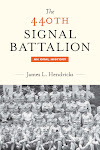As the Golden Gate Bridge and the California coast were swallowed by fog, the men of the 440th went below decks and began a journey of unknown length to an unknown destination.
Long before the ship had left the dock, crew and passengers alike had speculated their next port of arrival would be Alaska. After all, it was only a hop, skip and a jump to the Japanese mainland. In fact, a small detachment of Japanese soldiers had already landed on and occupied a small island in the Aleutians. And, a new highway - The Alcan Highway - was being built from Canada to Alaska and it made perfect sense that a communications network would be required.
Others were dreaming of warmer climes and another rumor ran stem to stern that Hawaii was awaiting their arrival. Wishful thinking is a sweet pastime: it keeps the spirits high and costs nothing. At some point shortly after leaving San Francisco, it became obvious which direction the ship was sailing. They were bound for the eastern coast of Australia.
During the first few days of the voyage the novelty of being aboard a large seagoing vessel was beginning to wear thin. Quarters were cramped and there were only so many things to do. And, that number was very limited. The newspapers brought on board from San Francisco were a few days old. Then a week old. Then two. You could only play so much poker. The same movies were shown with numbing repetition. The men could endlessly write letters, if thy wished. But the letters were all traveling along with the writers . . and they were traveling in the wrong direction!
At least they were moving in a known direction with a known destination. After leaving California, the Torrens joined several other ships along the way, and within the first few days of the voyage the total number of ship would reach twenty-two, two of them being US Navy destroyers. But the pace of the convoy was painfully slow, as the top speed of the slowest ship determined the top speed of the entire group.
There were several 'alerts' during the first ten days after leaving port but they all turned out to be false alarms. No enemy submarines had ever been seen in these waters but that was no reason to become lax. This was wartime and caution, watchful eyes and prudence were the order of the day. However, there were other dangers in this part of the Pacific.
East of New Zealand, the calm seas became dark and brooding and within hours they were sailing into a typhoon, with its mountainous waves and howling winds. At some pointduring the night of thre storm, many of the ships became separated from the main convoy. The Torrens was one of them. To this day, it is unclear if the captain of the ship had permission to sail on toward Australia instead of rejoining the convoy. In any case, the Torrens cranked up its boilers and ran at its top speed of about 20 knots for the next several days. The 440th reached Brisbane on the morning of 15 July, a full five days before the main convoy!
The next segment of their adventure was about to begin.
skip to main |
skip to sidebar
Documenting the 65-year history through personal stories, photographs, and other records
Please provide your story!
Were you in the 440th? Do you have a story to tell? A photograph to share? Share your story here.
The 440th Signal Battalion: An Oral History
Visit the book website here.
Other Sites of Interest
Search This Blog
Blog Archive
-
►
2007
(3)
- ► 07/08 - 07/15 (1)
- ► 11/11 - 11/18 (1)
- ► 12/23 - 12/30 (1)
-
▼
2008
(5)
- ► 01/27 - 02/03 (1)
- ► 02/10 - 02/17 (1)
-
►
2009
(1)
- ► 10/11 - 10/18 (1)
-
►
2010
(1)
- ► 06/20 - 06/27 (1)
About Me
- James L Hendricks
- I was drafted in September 1952 and, after basic training and signal school, assigned to the 440th Signal Battalion. In June 1954 I was honorably discharged after serving in Korea. I recently finished writing a book about the battalion’s sixty-five-year history--The 440th Signal Battalion: An Oral History.



